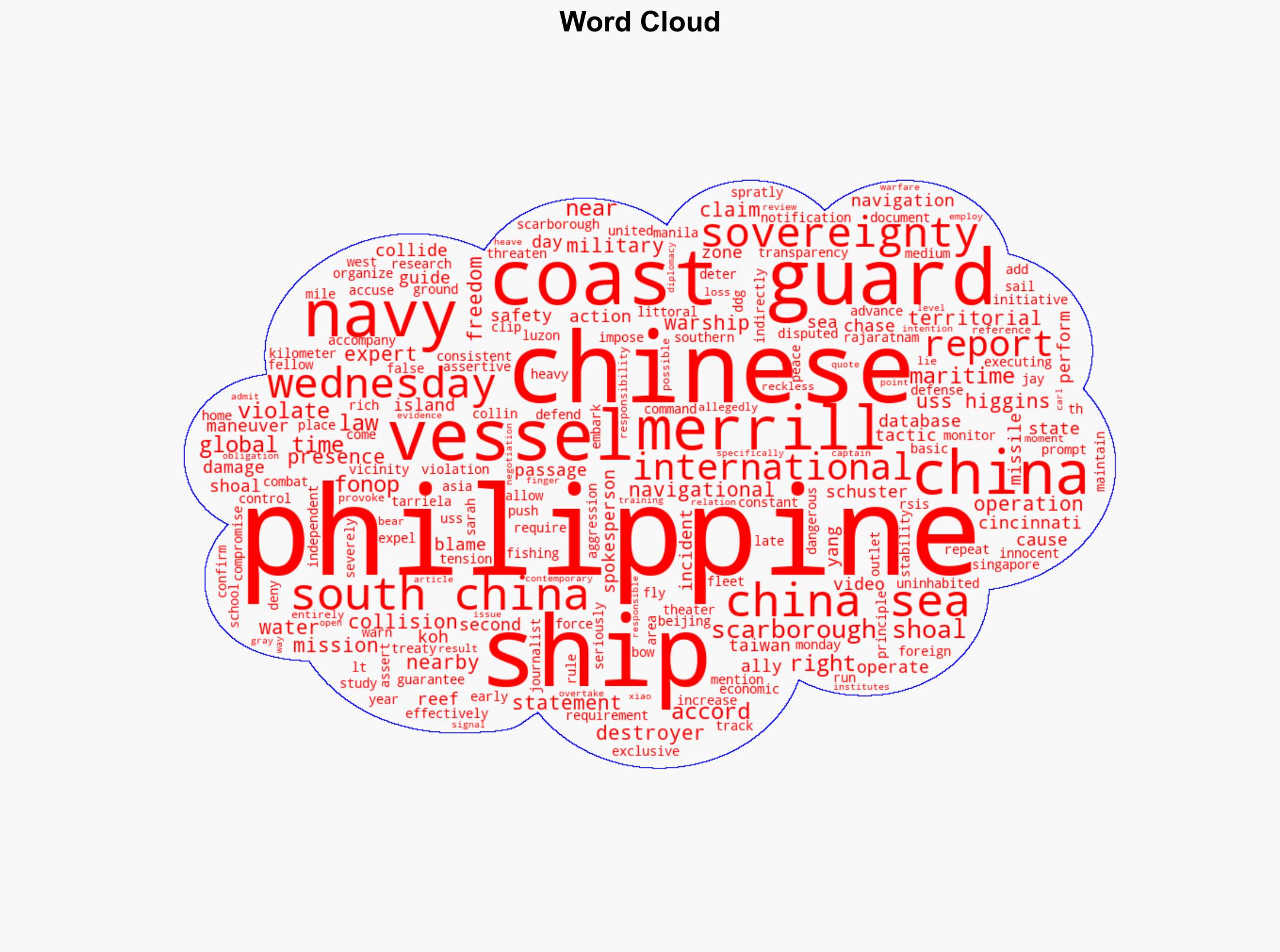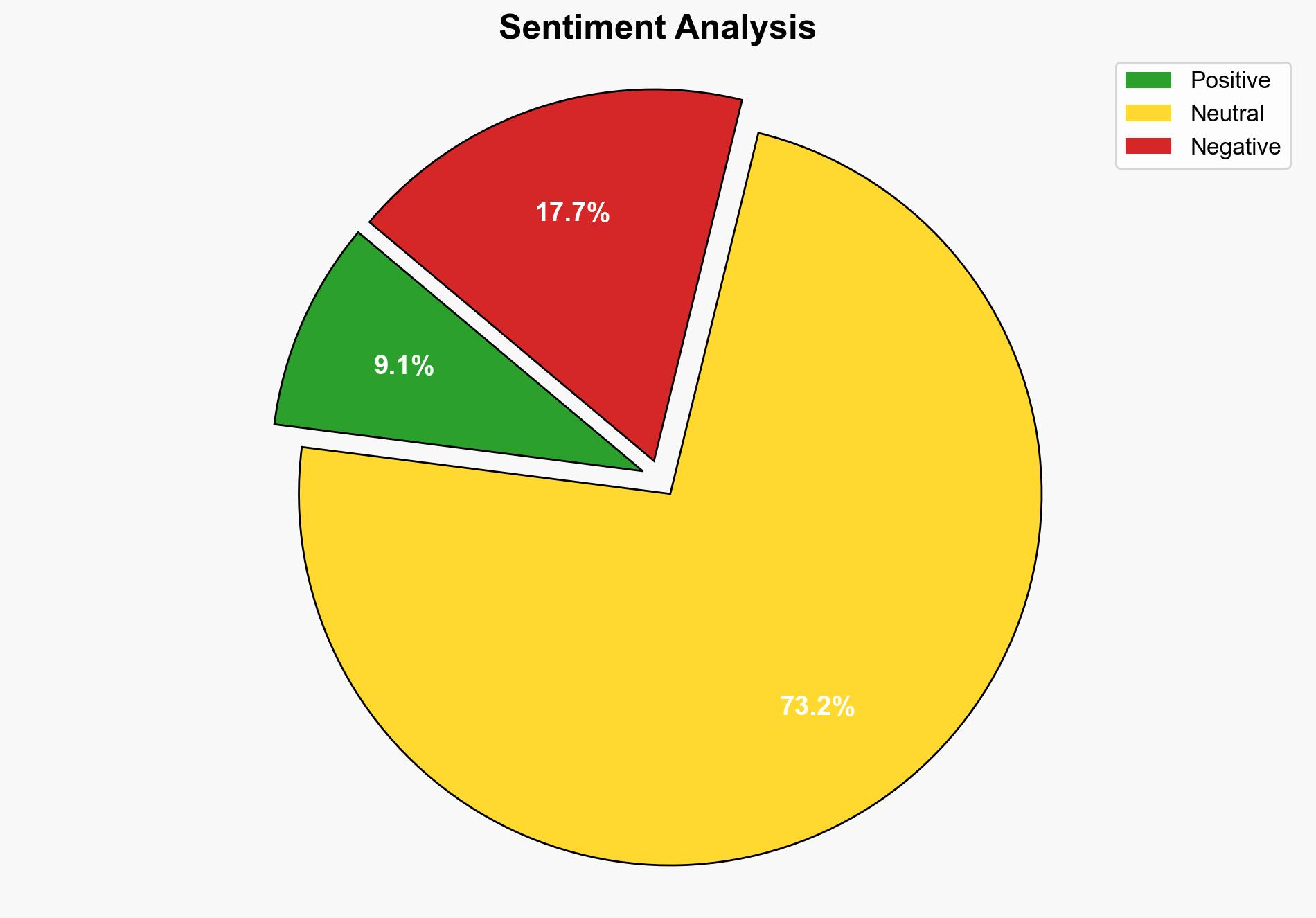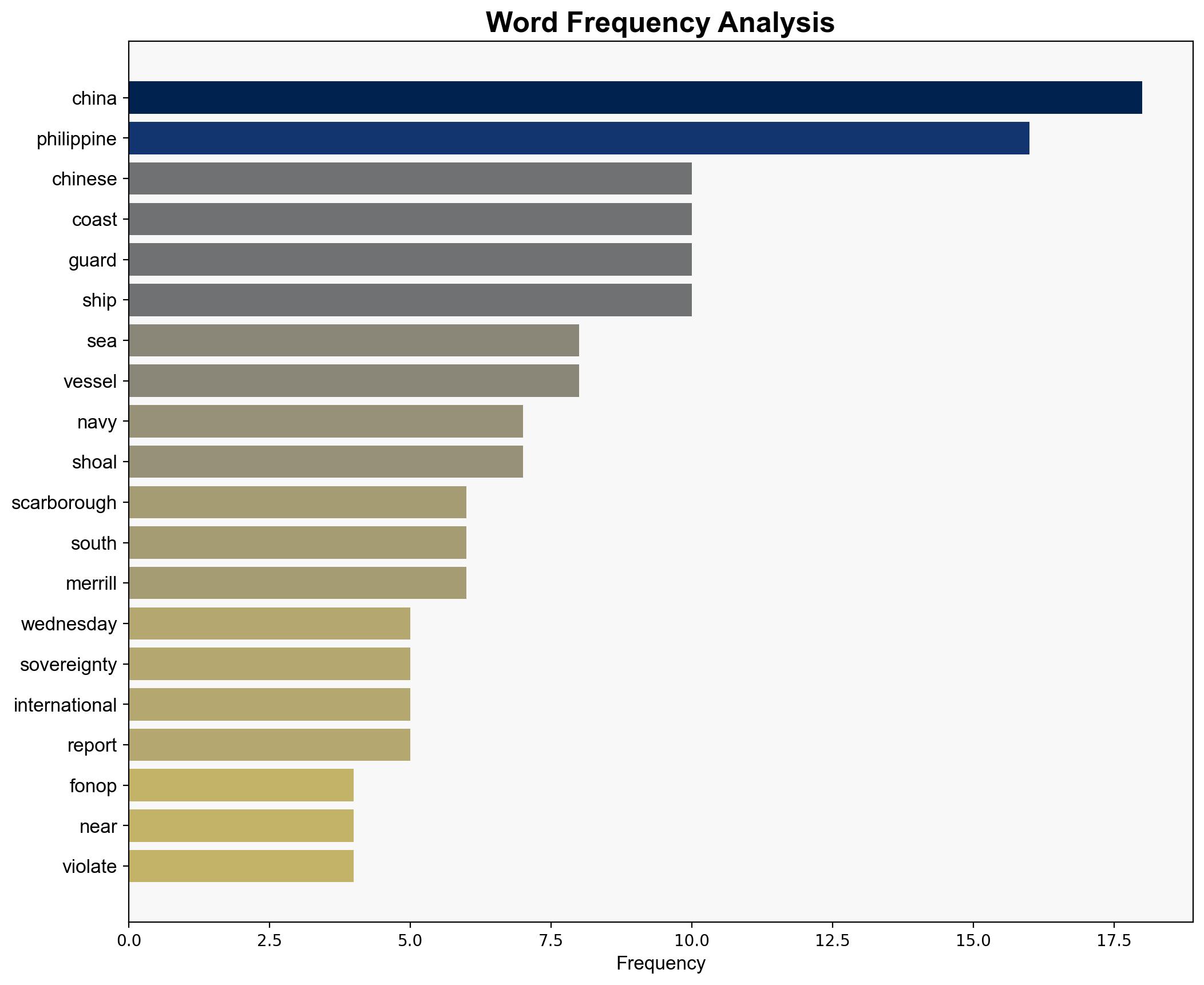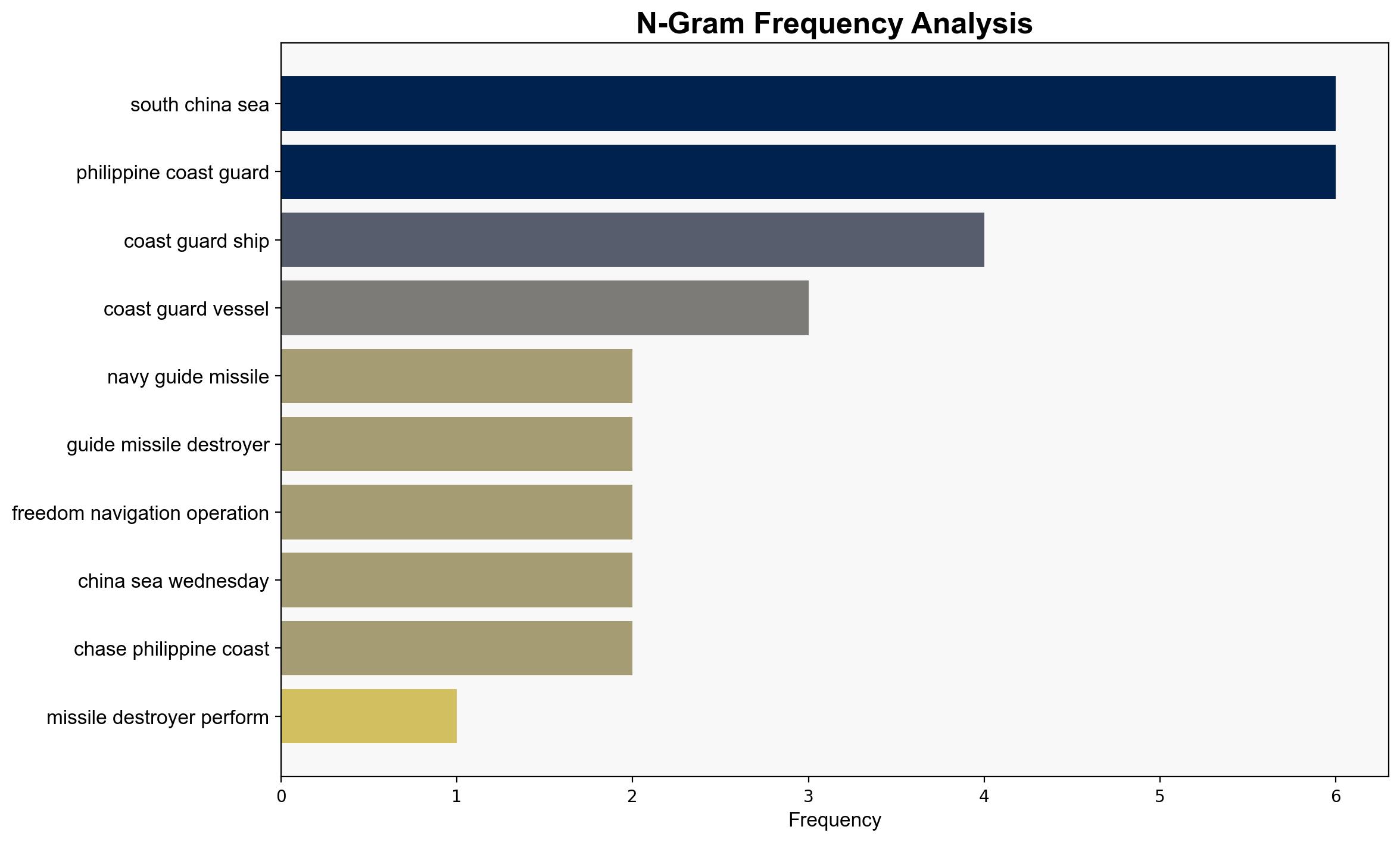US warships sail in vicinity of disputed shoal where Chinese ships collided – CNN
Published on: 2025-08-14
Intelligence Report: US warships sail in vicinity of disputed shoal where Chinese ships collided – CNN
1. BLUF (Bottom Line Up Front)
The most supported hypothesis is that the US Navy’s Freedom of Navigation Operation (FONOP) near the Scarborough Shoal is a strategic maneuver to assert international maritime rights and challenge China’s territorial claims. This action is consistent with international law and aims to uphold navigational freedoms. Confidence level: Moderate. Recommended action: Continue diplomatic engagement with regional allies to ensure a unified response to territorial disputes and maintain open communication channels with China to prevent escalation.
2. Competing Hypotheses
1. **Hypothesis A**: The US Navy’s FONOP is primarily a routine operation to assert navigational rights and challenge excessive maritime claims by China, consistent with international law.
2. **Hypothesis B**: The US Navy’s presence is a calculated response to recent tensions and incidents involving Chinese and Philippine vessels, aimed at deterring further aggressive actions by China in the region.
Using the Analysis of Competing Hypotheses (ACH) 2.0, Hypothesis A is better supported by historical patterns of US FONOPs and statements from US officials emphasizing adherence to international law. Hypothesis B, while plausible, lacks direct evidence linking the operation to recent incidents.
3. Key Assumptions and Red Flags
– **Assumptions**: The US Navy’s operations are conducted in accordance with international maritime law. China perceives these operations as a direct challenge to its territorial claims.
– **Red Flags**: China’s accusation of territorial sovereignty violations may be part of a broader narrative to justify increased military presence. The absence of independent verification of the collision details raises questions about the accuracy of reported events.
4. Implications and Strategic Risks
The ongoing presence of US warships in disputed waters could lead to increased military tensions and potential miscalculations. This situation could escalate into broader regional conflicts involving other claimants like the Philippines and Taiwan. Economically, heightened tensions may disrupt trade routes through the South China Sea. Geopolitically, this could strain US-China relations and complicate diplomatic efforts in the region.
5. Recommendations and Outlook
- Enhance diplomatic efforts with ASEAN nations to build a coalition supporting freedom of navigation.
- Increase intelligence sharing with regional allies to monitor Chinese military activities.
- Scenario Projections:
- Best: De-escalation through diplomatic channels and adherence to international law.
- Worst: Military confrontation leading to regional instability.
- Most Likely: Continued strategic posturing without direct conflict.
6. Key Individuals and Entities
– Lt. Sarah Merrill (US Navy spokesperson)
– Jay Tarriela (Philippine Coast Guard spokesperson)
– Collin Koh (Research Fellow, RSIS, Singapore)
7. Thematic Tags
national security threats, maritime security, regional focus, US-China relations, South China Sea disputes




